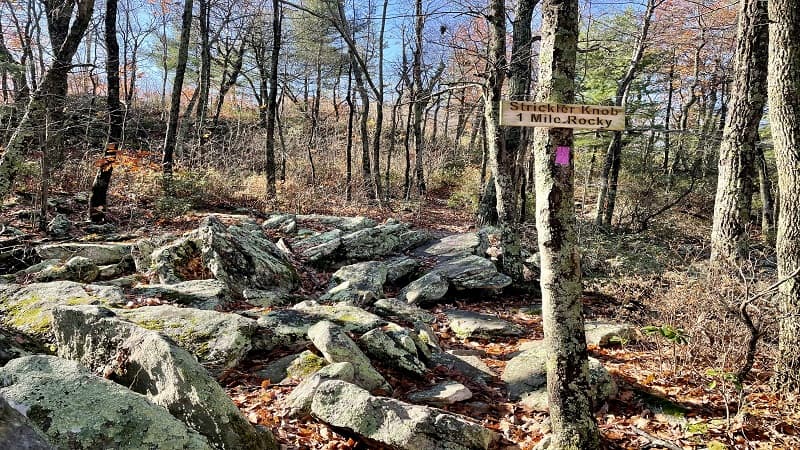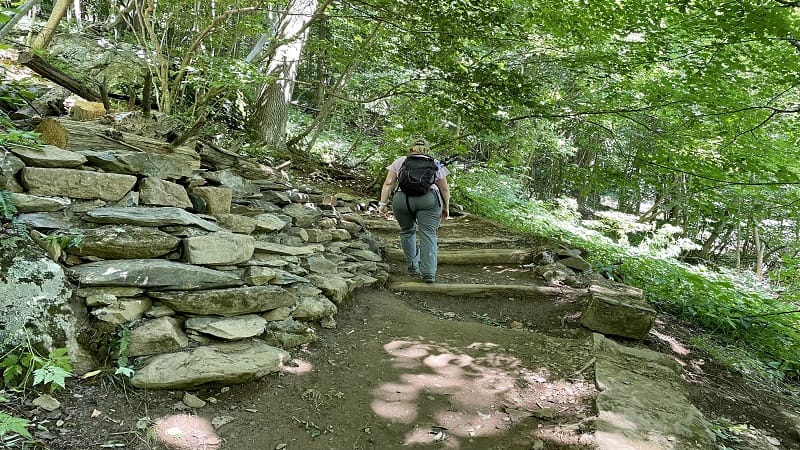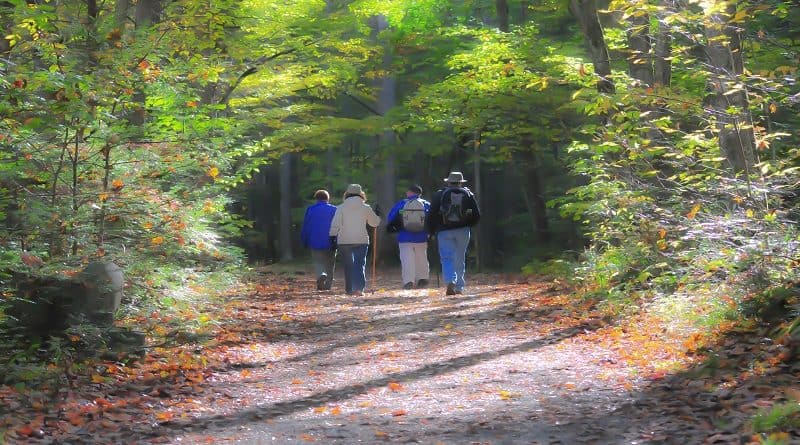How Long Does It Take to Hike 5 Miles?
How long does it take to hike five miles? Just as no two hikes are the same, no two hikes will take exactly the same amount of time to complete.
Generally speaking, a five mile hike can take from 65 minutes to more than two hours. However, everyone has a different hiking pace and speed.
There are also many factors to take into consideration, like elevation gain, incline, weather, fitness level and terrain, as well as the weight of your daypack.
A hike on flat terrain, like crushed gravel, is likely to take far less time than a hike on rough terrain, like a rock scramble or a trail with exposed tree roots.
There is, however, a way to home in on a more accurate time.
Naismith’s Rule

This is where Naismith’s Rule comes in for the win. Naismith’s Rule calculates how long it may take a relatively fit person to ascend or descend a distance.
This rule dates back to 1892 and assumes one hour per three miles on a horizontal path. Technically, it’s one hour per five kilometers.
William Naismith, creator of Naismith’s Rule, was a Scottish mountaineer. Hence, the use of the metric system, rather than the imperial system we use.
Since not all paths are perfectly horizontal, Naismith’s Rule also assumes an additional 10 minutes for every 100 meters (328 feet) of elevation gain.
Using Naismith’s Rule, a fit-minded hiker may take 70-ish minutes to complete a three-mile hike with an elevation gain of 325 feet.
Validating Naismith’s Rule
To test out this rule of thumb for myself, I pulled up a few of my recent hikes in AllTrails. One I looked at was The Priest, which was an even nine miles.
Using Naismith’s Rule, a nine mile hike should have a base hiking time of three hours at a calculation of three miles per hour.
The elevation gain was 3,169 feet. Adding on 10 minutes to the overall hike time for every 328 feet, that’s roughly 100 minutes to tack on.
So, I added 180 minutes for hiking (three hours) to 100 minutes for elevation for a total of 280 minutes (4 hours, 40 minutes), per Naismith’s Rule.
In AllTrails, my moving time was 4 hours, 45 minutes. That’s pretty spot on for such a simple hiking time calculator. Thank you, William Naismith.
Hiking Speed vs. Hiking Pace

Up to this point, we’ve considered overall hiking time. But, is there a difference between average hiking speed and average hiking pace?
Interestingly, hiking speed and hiking pace are not the same. I know, they sound the same, right?
Your average hiking pace is the time it takes you to hike one mile. Your average hiking speed is the opposite.
Your average hiking speed is how many miles you can go in a set time, like one hour. Pace and speed are essentially two methods of measurement.
If you are hiking on a trail and it takes you 15 minutes to hike one mile, your average pace is 15 minutes and your average speed is four miles per hour.
Hiking Difficulty Calculator
Readily available online tools, like AllTrails, can help you uncover the key metrics you’ll need for Naismith’s Rule. Namely, distance and elevation gain.
However, you’ll want to dig deeper to get a better picture of the true difficulty of a hike you are considering in the future.
For starters, AllTrails lists a rating of easy, moderate or hard for each hike. At the most basic level, this is helpful, even if the rating is not always accurate.
Next, look at some of the tags chosen by reviewers (those who actually hiked the trail) to describe the trail. For example, Strickler Knob Trail in AllTrails.

Tags include “rocky,” “scramble” and “over grown.” These words alone indicate that the trail may be relatively challenging for the average hiker.
Next, scroll down to Reviews. There are lots of positive comments, like “incredible views,” “very enjoyable” and “fun hike.”
However, in gauging difficulty, make sure to home in on feedback like “can be intense at times” and “slippery going back down.”
Another reviewer broke the hike into “1/3 steep incline, 1/3 flat, 1/3 rock scramble.” Now that’s helpful in ascertaining the strenuousness of the hike.
One last tip is to click the Activities tab. Click the maps for each hiker that completed the hike and you can see their average paces.
Summing up, it’s wise to use AllTrails pre-hike to take into account ratings, tags, reviews and average paces to secure a more subjective picture of a hike.
Armed with this knowledge, you can adjust the estimated hiking time you calculated for yourself up or down for a given hike using Naismith’s Rule.
Hiking Trail Steepness

While elevation gain is good to know, it’s also wise to get a handle on the relative steepness of a hiking trail.
A gentle slope has a grade of 7%. This would be a small, easy hill you may encounter on a hike. A moderately steep incline would have a 14% grade.
Anything over 20% is steep and strenuous. This could be a rock scramble or any kind of challenging terrain. You can get this info from AllTrails, too.
Going back to The Priest example, I was scared to death by an overall elevation gain of 3,169 feet when I was standing at the trailhead.
However, when I scrolled across the miles on the hike map on AllTrails, I learned that much of the trail was in the 10% to 15% range.
Yes, there were some steep sections, but it was not nearly as terrible as I’d feared.
Final Thoughts
It’s impossible to get a completely objective read on the difficulty of a trail or how long it will take you to complete a hike.
However, it’s wise to seek out as complete a picture as you can before you set off on a trail. Even the day of a hike, consider weather and pack weight.
Naismith’s Rule is a great place to start when you want to know how long it will take you to finish a hike, but consider all subjective factors, too.

Erin Gifford has completed more than 300 hikes in Virginia. She is also the author of three hiking guidebooks from Falcon Guides. Need help finding a hike? Check out the Trail Finder feature or send Erin an email at [email protected].




